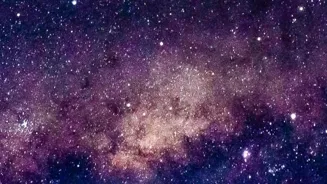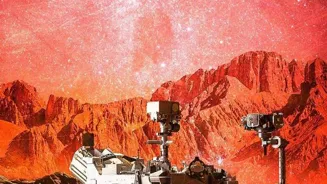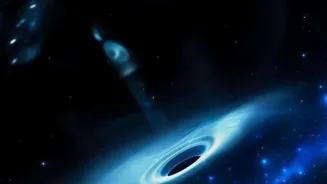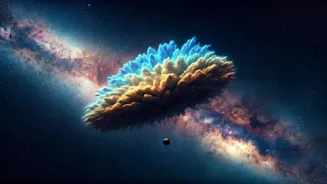Unraveling the Cosmic Web: A Journey into the Universe's Mysteries. Delve into the intricacies of space's grand design
For centuries, humankind has gazed at the night sky, pondering the mysteries of the cosmos.
Now, scientists are making significant strides in understanding the universe's intricate structure – a vast, interconnected network known as the cosmic web.
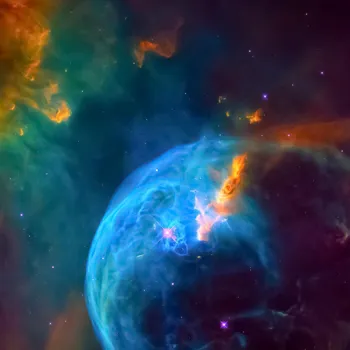
Imagine a spiderweb, but instead of silk, it's made of galaxies, gas, and dark matter, stretching across billions of light-years. This is the cosmic web, and studying it is helping us unlock the secrets of how the universe evolved and how galaxies like our own Milky Way came to be.
It's a fascinating area of research that combines astronomy, physics, and cutting-edge technology to paint a picture of the universe on the grandest scale imaginable.
Galaxies form cosmic web through simulations and data analysis
The cosmic web isn't something you can simply see with a telescope. It's a subtle pattern revealed through the distribution of galaxies across the sky. Think of it like this: galaxies aren't randomly scattered throughout space.
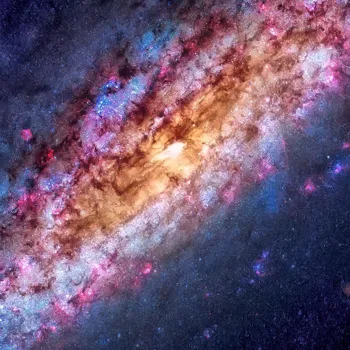
Instead, they tend to cluster together in vast groups and clusters, connected by filaments of gas and dark matter. These filaments are like the threads of our cosmic web, and the empty spaces between them are known as voids.
Visualizing this structure requires sophisticated computer simulations and meticulous data analysis. Scientists create enormous simulations of the universe, modeling the interactions of gravity, gas, and dark matter to see if they can reproduce the observed distribution of galaxies.
By comparing the simulations to the real universe, they can test their theories and refine their understanding of how the cosmic web formed.
Cosmic web formed from early universe fluctuations, shaped by gravity
But how did this cosmic web come to be? The answer lies in the very early universe, just after the Big Bang. In those first moments, the universe was filled with tiny fluctuations in density – some regions were slightly denser than others.
Over billions of years, gravity amplified these initial fluctuations. Denser regions attracted more matter, eventually collapsing to form galaxies and clusters of galaxies. The less dense regions emptied out, creating the voids.
The cosmic web is essentially a snapshot of this process, a frozen record of the universe's evolution shaped by the relentless pull of gravity. Understanding this process helps us understand how we are all here.
It's a story spanning billions of years, and the cosmic web is a key piece of the puzzle.
Studying cosmic web challenges due to invisible dark matter, but indirect methods reveal structure
One of the biggest challenges in studying the cosmic web is that much of it is invisible. The filaments that connect galaxies are made mostly of dark matter, a mysterious substance that doesn't interact with light. So, scientists have to rely on indirect methods to study it.
They look for the faint glow of hydrogen gas that is heated by the gravity and radiation from galaxies. This gas traces out the structure of the filaments, allowing scientists to map the cosmic web even where they can't see dark matter directly.
They also use gravitational lensing, a phenomenon where the gravity of massive objects bends the light from more distant galaxies.
By studying how these galaxies are distorted, scientists can infer the presence of dark matter along the line of sight, providing another way to map the cosmic web in detail.
Understanding cosmic web's role in galaxy evolution & testing cosmological models
Why does all this matter? Understanding the cosmic web is crucial for answering some of the fundamental questions about the universe. For instance, it helps us understand how galaxies evolve.
The filaments of the cosmic web act like highways, channeling gas and dark matter into galaxies, fueling star formation and driving the growth of supermassive black holes.
By studying the relationship between galaxies and their surrounding cosmic web environment, scientists can learn how galaxies are shaped by their surroundings and how they influence the distribution of matter on the largest scales.
The cosmic web also provides a valuable test of our cosmological models. By comparing the observed structure of the cosmic web to the predictions of these models, scientists can test whether our understanding of gravity and dark energy is correct.
India's crucial role in cosmic web research
India is playing an increasingly important role in unraveling the mysteries of the cosmic web. Indian scientists are involved in several international collaborations that are mapping the distribution of galaxies and studying the properties of the intergalactic medium.
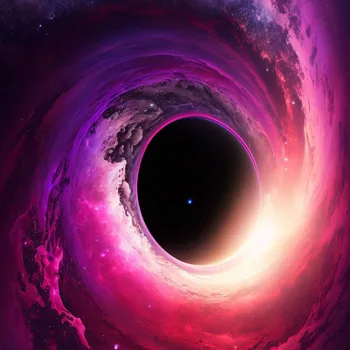
Indian telescopes, like the Giant Metrewave Radio Telescope (GMRT), are being used to observe the faint radio signals from the cosmic web, providing a unique window into the distribution of gas and dark matter.
Furthermore, Indian astrophysicists are developing sophisticated computer simulations to model the formation and evolution of the cosmic web, and are doing exciting work in developing new techniques for analyzing cosmological data.
These contributions are helping to advance our understanding of the universe and its large-scale structure, placing India at the forefront of cosmological research.
The journey to understand the cosmic web is a long and challenging one, but with each new discovery, we get closer to unlocking the secrets of the universe.

